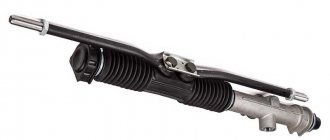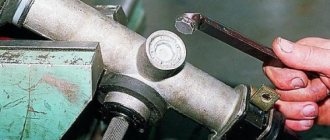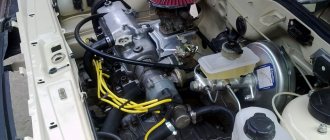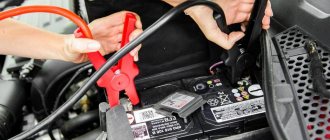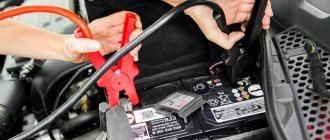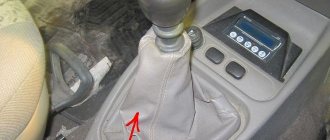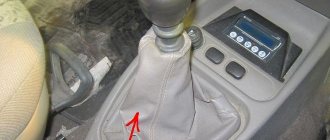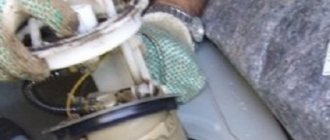The steering mechanism is one of the main elements of vehicles, which bears considerable responsibility for the life, health and safety of the driver. Steering rack lubrication requires special attention, without which it is impossible to transmit steering rotation to the wheels. Indeed, during the process of friction, the metal parts of the car are constantly exposed to heat and wear out to the point of being unusable. The processing of parts makes it easier to turn the steering wheel, and if there is an electric or hydraulic booster, it extends their service life.
A steering rack is a device that allows you to control the synchronous operation of the front wheels using the steering wheel.
Do I need to lubricate the steering rack?
To understand why a lubricant is used, it is worth understanding the structure of the mechanism. It consists of a rack and pinion. Thanks to these elements, the rotational motion is transmitted to the wheels. When the driver turns the steering wheel, the toothed gear moves in the specified direction. She clings to the teeth of the rack and pushes it.
The rack transmits movement to the steering rods rigidly fixed at its ends. They begin to move, and as they count, the wheels turn at the desired angle. The rods are connected to the steering tips; they transmit the steering movement to the axles of the front wheels.
Steering rack
According to the type of drive, racks are divided into three types:
- The most modern ones are electric.
- Hydraulic, like the previous version, are designed to reduce the driver’s effort when turning the steering wheel.
- Mechanical ones are widespread.
This part converts the rotation of the steering wheel into a deflection of the front wheels relative to the horizontal plane. Driving a car requires constant maneuvering, so the mechanism used to control it must be in good working order. Applying lubricant makes the steering wheel easier to rotate and therefore simplifies the driving process.
The steering rack transmits and transforms the movement of the steering wheel to the wheels. But when traveling, due to friction, the metal elements of this unit heat up and are subject to wear. Lubrication increases the service life of parts and extends the service life of the entire mechanism.
What lubricant to use for the steering rack
The steering mechanism is one of the main elements of vehicles, which bears considerable responsibility for the life, health and safety of the driver. Steering rack lubrication requires special attention, without which it is impossible to transmit steering rotation to the wheels. Indeed, during the process of friction, the metal parts of the car are constantly exposed to heat and wear out to the point of being unusable. The processing of parts makes it easier to turn the steering wheel, and if there is an electric or hydraulic booster, it extends their service life.
A steering rack is a device that allows you to control the synchronous operation of the front wheels using the steering wheel.
How to lubricate the steering rack
The exact parameters must be indicated in the instructions supplied by the automaker; you must follow them. But external factors are also taken into account, including climatic conditions.
For example, some lubricants are not suitable for cold climates with sub-zero temperatures. To improve properties, additives are added - they increase frost resistance, oxidation resistance, moisture resistance and other characteristics.
Among the various types of lubricants, those made on a lithium basis are considered suitable for the steering rack. They can last for a long time and do not dry out much when exposed to oxygen. They are not afraid of water; if moisture gets in, the composition retains its original properties.
A viscous substance is produced by thickening petroleum oils with lithium soap. Lubricants are distinguished by their degree of viscosity, and they also come in different colors. The most commonly used types of lubricants are:
- Fiol - available in varying degrees of viscosity.
- Cyatim 201 is a domestic development and is in wide demand due to its affordable cost. It has an operating temperature range from -60 to 90 degrees.
- Severol is frost-resistant, designed for regions with cold climates.
- Litol-24 - at a temperature of -20 degrees, the viscosity of this product is halved.
It is better to choose the level of frost resistance with a margin, otherwise the mixture designed for -25 degrees will freeze in a sudden frost of thirty degrees. But first of all, it is important to follow the recommendations of the car manufacturer. As a last resort, the recommended product is replaced with an analogue of similar composition.
Synthetic lubricant
The service life of the mechanism is affected by operating conditions. The hinge must remain sealed to prevent dust and moisture from entering it. When the seals are damaged and do not fit tightly, even an ideal lubricant cannot improve the safety of the parts. The lubricant mixture mixed with dirt particles only increases wear.
When to and when not to lubricate the rack
You can determine the malfunction of this unit with 100% accuracy by contacting the nearest service station. But it is also possible to independently identify the need for lubrication. To do this, you need to listen to the car while driving and pay attention to extraneous sounds.
If there are knocking noises in the steering gear area, one of the most likely causes is a lack of lubrication. Often the sound appears only when driving on rough roads outside the city. But using this method does not provide a complete guarantee, because the reason may not be in the rack at all.
When the steering wheel stops turning, this indicates that the steering mechanism has become jammed. Such a breakdown is possible, for example, when the teeth bite due to insufficient lubrication. You cannot ignore it, since the car’s controllability and road safety depend on the serviceability of the steering wheel.
Teeth on the steering rack
Often drivers decide to lubricate the rack if the manufacturer used little lubricant. After purchasing a new car, it is recommended to check this unit, even if there are no visible problems. This measure is simply necessary if the steering wheel has to be turned with force. But you shouldn’t lubricate the rack when you don’t have a suitable product at hand.
When applying lubricant, it is important to completely fill the gaps and turn the steering wheel so that the mixture is evenly distributed. For this reason, a syringe is used for injection, which can be purchased at a pharmacy. It allows you to pump a lubricating substance into hard-to-reach places.
In cold weather, a lubricant that is not suitable for the temperature range will freeze. As a result, the steering wheel will stop turning; in order to move, you will have to warm up the engine for a long time. Then a crunching sound is possible when turning the steering wheel, so as not to damage the anthers, you will have to be careful when driving.
If you start making sharp jerks, the mechanism may be damaged. On vehicles with power steering, the hose may rupture and the power steering pump may fail. Of course, you can continue to operate the vehicle, but it is better to change the lubricant to one suitable for sub-zero temperatures.
Alarming symptoms
No matter how often you change the steering rack lubricant, unfortunately, it cannot extend the life of all parts of the mechanism indefinitely. Therefore, if the following factors are detected, it is recommended to immediately stop using the vehicle and contact a service center.
- Increased steering play.
- Turning the steering wheel requires more effort than before.
- Traces of steering rack lubricant leakage were found.
Knocking and extraneous sounds in the steering mechanism. They usually appear when making a sharp turn or turning the steering wheel, or when hitting protruding parts of the road. To make sure that the cause is in the rack, you need to:
- place the car on a flat surface;
- get out of the car and open the hood;
- unscrew the wheel until it stops in both directions;
- Listen carefully to where the sound comes from when you turn the steering wheel sharply.
Timely diagnostics will protect your car from possible future serious breakdowns and sudden expenses.
All lubricants have a different set of characteristics (composition, properties, cost). And if the question arises about which lubricant to use, then it is better to give preference to lithium. The best on the market are considered to be Litol-24, Fiol, Tsiatim and Severol. They are moisture-resistant, have a long processing interval, reduce vibration, do not wash off, and contain antioxidant and wear-resistant additives. Steering rack lubricant must have a high load-bearing capacity to avoid extrusion.
If a low-quality lubricant is used in operation, which does not meet the listed qualities, then this will soon lead to wear of individual parts and assemblies of the steering mechanism. It is important to always listen to your car, pay attention to warning signs in time, carefully choose which lubricant to lubricate, lubricate the steering rack in a timely manner and be responsible in choosing a lubricant.
Steering is one of the main elements of a car. It is responsible not only for turning the vehicle in the direction specified by the steering wheel, but also for the safety of the driver. Therefore, when servicing this unit, it is necessary to use high-quality spare parts and lubricants. In this article we will talk about lubricant for the steering rack.
How to lubricate the steering rack
The longer a given unit is in use, the more attention must be paid to maintenance. If there are serious problems, it is better to completely disassemble the mechanism. Only with complete disassembly can you lubricate the rack as efficiently as possible. To carry out the work you will need the following tools:
- set with keys and sockets;
- nail polish or marker;
- syringe;
- hose connected to the syringe;
- WD-40 product.
First, the steering wheel is placed in the middle position and the position of the shaft is marked with nail polish or a marker. If this is not done, during subsequent assembly it will be difficult to understand what position the shaft was in. To get to the steering rack, you need to remove the interfering parts in the engine compartment.
If the mechanism is equipped with power steering, you will first need to pump out the fluid from it. This operation can be performed using a syringe with a hose connected to it. Next you need to install the jack and remove the front wheel.
Then you need to unscrew the stabilizer link and the lateral stability arm.
Now you can remove the protective boots and steering rods. After this, the locking nut and bolt are unscrewed, which holds the steering shaft.
The shaft is knocked up using a hammer, having first removed the retaining ring.
Now you can remove the seals, it is important to remember that the top one is secured with a locking pin. This pin can be knocked out with a hammer.
Next, you need to twist the locking ring plug, disconnect the hoses and pipes attached to the rack, and then drain the oil. To dismantle it, you will have to remove the propeller shaft bolt. The spare part must be placed on the table and disassembled.
The removed parts are washed with a special engine cleaning agent or regular gasoline. The old lubricant should not remain on the surface and mix with the new one. First of all, remove the boot and oil seal. Then the anthers located on the tips are dismantled and twisted. To remove the shaft, unscrew the nut. The removed parts are also washed.
The rack needs to be lubricated; you will have to apply a lubricant to the outer surface. Now you need to carefully put on the boot, it is important to ensure that it does not twist. Then the bolts and tie rods are put back. To tighten the bolts correctly, you cannot turn the steering wheel, otherwise the marks will get lost. Next, assembly is performed in the reverse order of disassembly.
Purpose of the steering rack
The steering rack (RR) is designed to convert steering rotation into horizontal deflection of the wheels. The first such units were quite simple: a gear located on the steering shaft, an associated rack and steering rods. Today, steering mechanisms are somewhat more complicated. They come in three main types:
- Mechanical
- Hydraulic
- Electrical
The first type is the simplest. Here, the wheels turn due to the physical efforts exerted by the driver. In order to make the driver's work easier and improve control convenience, a steering rack with a variable gear ratio is used. This means that the pitch of the teeth changes towards the edges from the middle. This provides sharp, heavy steering at high speeds, and a smooth wheel ride when maneuvering at low speeds and at a standstill.
A hydraulic rack differs from a mechanical one in that the force applied by the driver to turn the steering wheel is reduced thanks to the hydraulic booster. This ensures easy and sharp driving. This structure is typical for modern vehicles.
The operating principle of an electric steering rack is similar to a hydraulic one, only the electric motor is responsible for the amplification. This unit can be installed either on the steering shaft or integrated into the rack (the safest option), or it can be built into the steering column (the cheapest and unsafe option).
How to lubricate the steering rack without removing it
Since removing the entire assembly is difficult, many people refuse such a complex method. But the rail can be lubricated without removing it. First you need to remove the protective casing from the motor cover. Now you need to find the steering rack boot and cut off the casing on which it rests with side cutters.
You need to check the condition of the boot and rod. If there is little or no lubricant on the surface, then you need to apply it. For this purpose, it is convenient to use a syringe or a rod bent in the shape of the letter “L”.
The viscous mass must be packed between the body and the rod. Next, the boot is installed; to secure the parts, you need to use ties of the appropriate size. Then you need to turn the steering wheel to the right and lift the car with a jack to get to the rack. All that remains is to check the boot on the wheel side.
The process of pumping lubricant is discussed in detail in the video:
Even without lubrication, the car will be able to drive, but the mechanism will wear out quickly, and at sub-zero temperatures the steering wheel will not turn. Therefore, you should regularly check that there is sufficient lubricant. The main thing is to know the temperature range at which the car will be operated. It is not necessary to contact a specialist, because any motorist can lubricate the mechanism if desired.
What and how to lubricate the steering rack
4.7 (93.33%) 6 votes
Lubricating the Lada Kalina steering rack without removing it - step-by-step instructions
Author: ides · Published 07/12/2016 · Updated 07/12/2016
Hello everyone. Today at VAZ Repair we’ll talk about the steering rack, or more precisely, about how to lubricate the steering rack on Kalina without removing it . The work is not difficult, so it, like many other works, can be safely done at home. The steering rack on the Lada Kalina is the same as in the “ten” and, just like on the VAZ 2110, it is not resistant to faults , so from time to time you have to “tinker” with it.
I already wrote about the signs of a faulty steering rack in the article: “Signs of a faulty steering rack. Diagnosis of gur with your own hands,” so I won’t focus too much on this at this stage. The need to lubricate the steering rack arises in the event of poor or difficult operation of the latter. To understand whether the steering rack needs to be lubricated, just look under the boots, which are attached to clamps at the ends of the rack. In my case, the rack rod was dry and looked like this (see photo):
Of course, it would be better to completely remove the steering rack and inspect all its parts, but this work takes much more time and is necessary only in extreme cases, when the rack not only needs lubrication, but is completely faulty. By the way, how to replace the steering rack is written in this article.
What will you need for the job?
For work you will need: several plastic clamps; lubricant (“Litol” or “Fiol” or some alternative); a syringe and a piece of tubing from a medical “system” (preferably); side cutters or knife (for cutting off the old clamp).
How to lubricate the steering rack without removing it - step-by-step instructions
1. So, first of all, we get to the anthers and bite off with side cutters or cut off with a knife the old clamps that secure the steering rack anthers.
2. Next, we evaluate the condition of the lubricant and its presence; as you saw in the photo above, my rack was completely dry. Also inspect the rack boot; if it is damaged or cracked, it needs to be replaced.
3. Turn the steering wheel as far as possible to the left or right (depending on which side you are working on) so that the rod goes inside the rack and does not interfere with filling the lubricant, then take a syringe with an extension (a piece of tube from a medical “system”), if you have one, of course, fill it lubricant there and squeeze the contents of the syringe into the cavity of the steering rack. If there is no syringe, fill it manually using a screwdriver or something similar to a spatula.
4. When the grease is full, take the boot and put it in place, after which we fix it with a plastic clamp.
5. Now we repeat all the above steps on the other side, remove the boot, turn the steering wheel in the opposite direction and fill the rack with lubricant.
6. We put on the boot and secure it with ties.
7. For greater reliability, you can turn the steering wheel left/right, thereby pumping the lubricant, as it were, and then repeat the procedure again. However, if you turned the steering wheel all the way and used a syringe with an extension, then I think there is no need for re-lubrication.
After lubrication of the Lada Kalina steering rack is completed, we assemble all the tools, wash our hands and check the work. The steering wheel should become smoother and softer. If lubrication does not lead to anything, you will have to look for the problem elsewhere. Perhaps it lies in critical wear of the rack parts or is associated with steering tips that need to be replaced.
